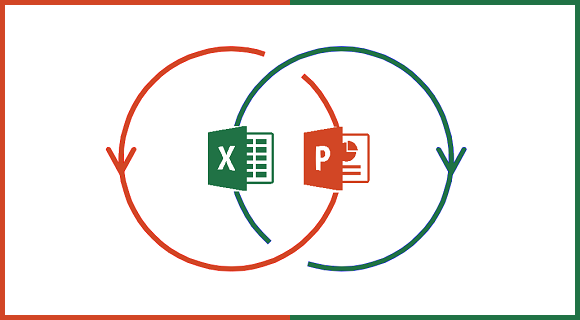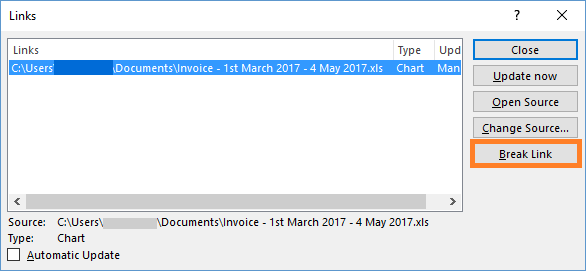Excel is an indispensable tool when it comes to analyzing numbers and data. Many presenters want to take analysis from Excel to PowerPoint. So, they copy charts and graphs from an Excel spreadsheet to a PowerPoint presentation. This seemingly innocuous procedure has some ramifications that might not be obvious in the beginning.

Ways to Show Excel Data in PowerPoint
There are a number of ways to include Excel data in PowerPoint.
You can Insert an image of the Excel data in PowerPoint. You can also make a copy of the same object (table, chart, etc) using PowerPoint. And, you can simply copy (Ctrl+C) and paste (Ctrl+V) an Excel object (table, chart, etc). This last one is called linking, and this is what we will discuss today.
What Happens When You Copy and Paste From Excel?
When you copy an object (table, chart, etc) from Excel to PowerPoint using the copy (Ctrl+C) and paste (Ctrl+V) commands, what you’re actually doing is linking an object from Excel to PowerPoint. That is to say, if the data were to be changed in Excel, the saved changes will also change in PowerPoint since it is a linked object.
Do I Need To Worry About This?
Well, Yes and No. If you’re the only person who will have access to the PowerPoint file, then no. But, if you’re not the only person who will access to the file, then you’re giving someone else access to change the Excel data through PowerPoint. This is especially true when sharing PowerPoint files over the network or through SharePoint (when the Excel file is also stored on SharePoint).
Breaking Links To Excel Files
There is a way that allows you to simply copy and paste objects from Excel to PowerPoint while also protecting your source data in Excel. You can do this by breaking the links between Excel and PowerPoint.
Note: Do this if no further changes need to be made to the data. This feature exists to share a PowerPoint file with others.
Click the File Ribbon, and then click Info. Scroll down the Right side of the screen. You should find a link labeled Edit Links to Files.

A dialog box should appear with a list of files linked to that PowerPoint file. Click the file that you want to disconnect and click Break Link.

Now, the objects will have changed to an uneditable format. Some tables and charts may change into images of tables and charts instead. It should look exactly the way it looked when you pasted it.

Leave a Reply